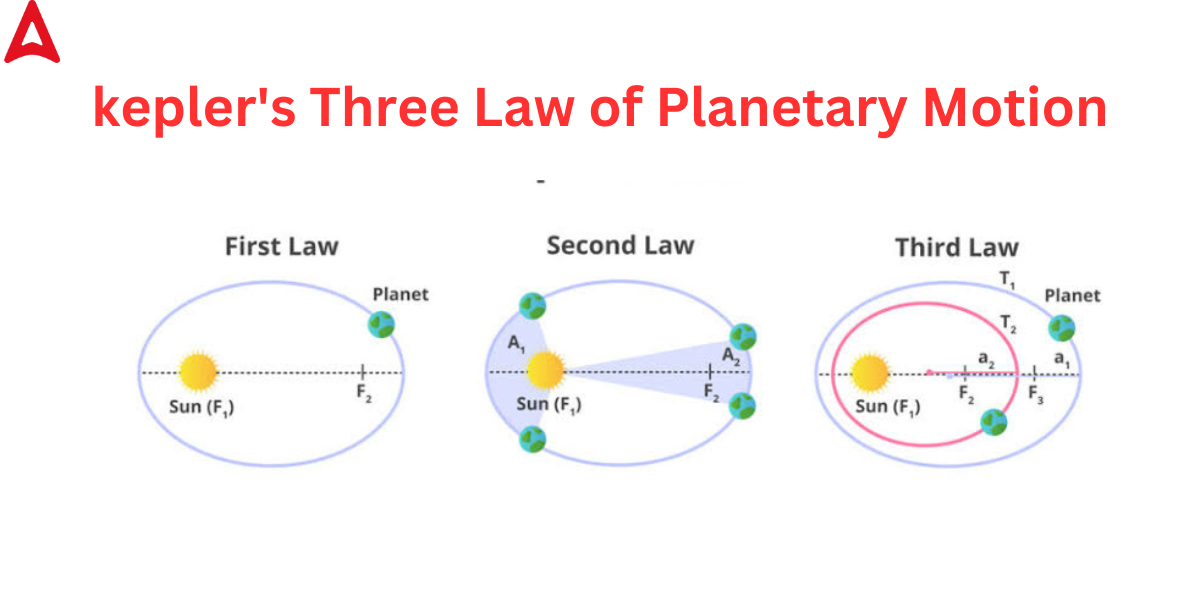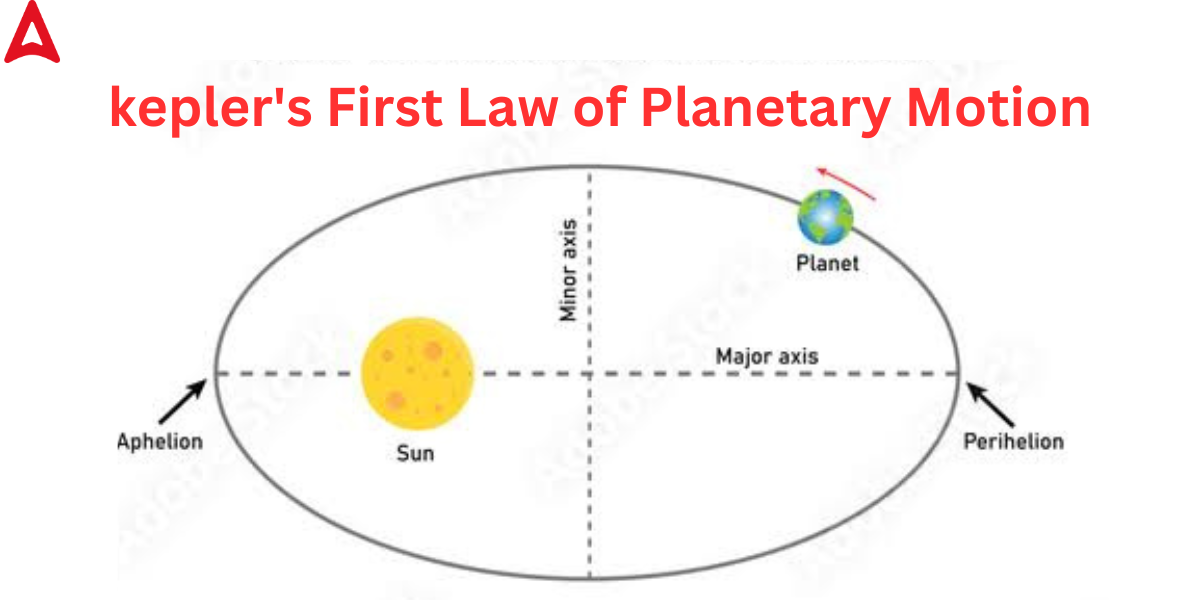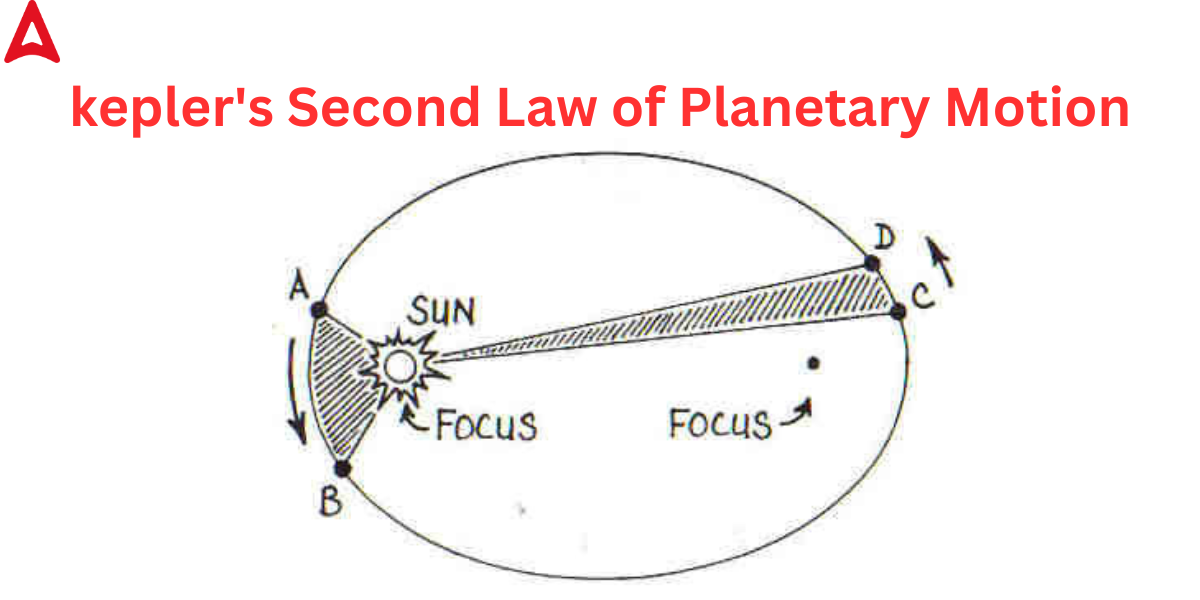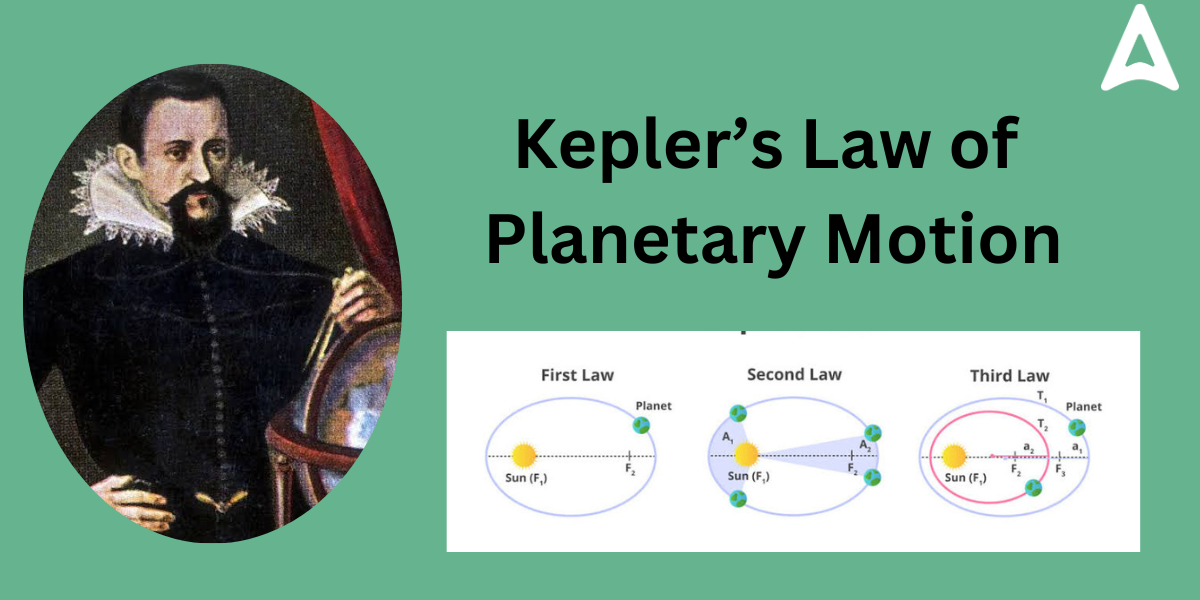Kepler’s laws of planetary motion described the planets moving the sun in elliptical orbits at one focus through its three different laws. These Three Laws of Kepler’s laws of planetary motion are The Law of Orbits, Areas, and Periods. Between 1609 and 1619, Johannes Kepler published his laws of planetary motion, which described the orbits of planets around the Sun. The concept of Kepler’s laws of planetary motion is one of the most important topics in the CBSE class 11 Physics syllabus. This article will assist you in understanding Kepler’s laws of planetary motion, their applicability, and their formulation in an efficient manner.
kepler’s Laws of planetary motion
Kepler’s laws of planetary motion, published between 1609 and 1619 by Johannes Kepler, define the orbits of planets around the Sun. The laws amended Nicolaus Copernicus’ heliocentric theory, replacing circular orbits and epicycles with elliptical trajectories and explaining how planetary velocities change. According to Kepler’s three laws of planetary motion,
- Kepler’s first law – The law of orbits: Planets follow an elliptical journey around the Sun, with the Sun as one of its foci.
- Kepler’s second law – The law of equal areas: An imaginary line extended from the planet to the Sun sweeps out the same amount of territory in the same amount of time.
- Kepler’s third law – The law of periods, which states that the square of a planet’s orbital period is directly proportionate to the cube of its semi-major radius of orbit.

Kepler’s Law of Planetary Motion Class 11
Ptolemy’s primary paradigm for planetary motions, in which all celestial objects, including stars, the sun, and planets, rotated around the earth. Nicolas Copernicus proposed a specified model a thousand years later in which the planets revolve in circles around the sun on a definite route. Many, however, dismissed his notion. But Later on, Tycho Brahe spent his entire life collecting observations of the planets with his naked sight.
Kepler was able to condense his mentor Tycho Brahe’s meticulously collected data with three statements that defined the motion of planets in a sun-centered solar system. Johannes Kepler developed three laws of planetary motion in the early 1600s, which became known as Kepler’s law of planetary motion. Kepler’s first two laws of planetary motion were published in 1609, and his third law was published in 1619.
kepler’s 3 Laws of Planetary Motion
Johannes Kepler suggested three laws of planetary motion in the early 1600s. Kepler was able to describe the motion of planets in a solar system centered on the sun. The following are Kepler’s three laws of planetary motion:
- The journey of the planets around the sun is elliptical, with the sun’s center placed at one focus. (The Elliptic Curve)
- An imaginary line formed from the sun’s center to the planet’s center will sweep out equal portions at equal time intervals. (The Equal Areas Law)
- Any two planets’ average separation from the sun is equal to the ratio of the squares of their periods.. (The Law of Harmonies)
kepler’s First Law of Planetary Motion
Kepler’s 1st law of planetary motion is widely popular as the Law of Orbit and also known as the law of ellipses describes how planets orbit the sun in an elliptical route.
According to Kepler’s first law of motion, “all planets revolve around the sun in elliptical orbits with the sun at one of the focus points.” This indicates that planets’ pathways differ from perfect circles and vary in irregularity. Each planet’s orbit around the Sun is an ellipse. One of the orbital ellipses’ foci is always at the center of the Sun’s orbit. The planet’s orbit is elliptical, which means that as it revolves around its axis, its distance from the Sun fluctuates.
Perihelion, or the point when the planet is closest to the sun, occurs when it is 147 million kilometers away, and aphelion, or the point when it is 152 million kilometers away, occurs when it is farthest from the sun.

kepler’s Second Law of Planetary Motion
Kepler’s second law of Planetary Motion is sometimes known as the “Law of Equal Areas.” According to Kepler’s second law, “the radius vector drawn from the sun to the planet gives out equal areas in equal intervals of time.” For example, if an imaginary line were stretched from the earth to the sun, the area swept out by the line would be the same every 31-day month. In basic terms, the 2nd law of Kepler’s law of Planetary Motion is referred to as the Law of Equals because an imaginary line extending from the center of the sun to the center of the planet sweeps out equal areas surrounding in equal intervals of time.

Kepler’s 2nd law of Planetary Motion also Suggested that The planet’s kinetic energy fluctuates along its course because of the non-circular nature of its orbit. As a result,a planet moves fastest at perihelion and slowest at aphelion. Kepler’s Second Law of Planetary Motion emphasizes the fact that planets do not move at the same speed throughout their orbits.
kepler’s Third Law of Planetary Motion
Kepler’s third law of planetary motion is often known as the Law of Periods. The third rule of Kepler’s law of planetary motion states that “the square of a planet’s time period of revolution around the sun in an elliptical path is directly proportional to the cube of its semi-major axis.”
The third law of Kepler’s law of planetary motion establishes a mathematical relationship between the orbital period of a planet and its average distance from the Sun.Kepler’s third law is phrased as follows:
T² ∝ a³
Where ‘T’ is the planet’s time period and ‘a’ is the semimajor axis.
Kepler’s third law assumes a more applicable version when using the equations of Newton’s laws of gravitation and motion.
P² = 4π² /[G(M1+ M²)] × a³
Where M1 and M2 are the masses in solar masses of the two circling objects.

The third rule of Kepler’s third law of planetary motion is crucial because it compares the motion properties of several planets, as opposed to Kepler’s first and second laws, which describe the motion attribute of a single planet. The third law of Kepler describes the association between the mass of the planet-star system, the distance of planets from the star, and their orbital period. The period needed for a planet to orbit the Sun increases exponentially with its radius, according to Kepler’s Third Law. of planetary motion. As a result, Mercury, the innermost planet, orbits the Sun in only 88 days. The Earth takes 365 days to complete one orbit, while Saturn takes 10,759 days.
Kepler’s Law of Planetary Motion PDF
In PDF we, Summarize Kepler’s Laws of Planetary Motion for you! Here’s a some brief overview:
First Law (Law of Ellipses): Planets move in elliptical orbits with the Sun at one focus of the ellipse.
Second Law (Law of Equal Areas): A line segment joining a planet and the Sun sweeps out equal areas during equal intervals of time. This means that a planet moves faster when it is closer to the Sun and slower when it is farther away.
Third Law (Harmonic Law): The square of the orbital period of a planet is directly proportional to the cube of the semi-major axis of its orbit. Mathematically, 𝑇2∝𝑎3, where T is the orbital period and a is the semi-major axis.









 AILET 2026 AIR 1: Check Full Toppers Lis...
AILET 2026 AIR 1: Check Full Toppers Lis...
 AILET Result 2026 OUT, How to Download S...
AILET Result 2026 OUT, How to Download S...
 CUET PG Crash Course 2026: Subject-Wise ...
CUET PG Crash Course 2026: Subject-Wise ...














